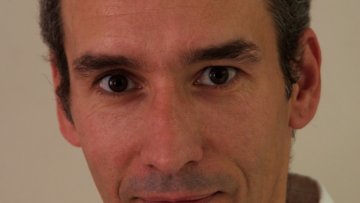Oxford Brain Mechanics Workshop: CMU-Oxford Alliance
Abstract
The 2015 Oxford Brain Mechanics Workshop 19 and 20 January, 2015 in St Hugh’s College, Oxford
Everybody is welcome to attend but (free) registration is required.
The event will include speakers from both CMU and Oxford working on Brain Mechanics and Trauma, as well as some chosen international members from the IBMTL* (www.brainmech.ox.ac.uk).
As well as focusing on various aspects of brain mechanics research, the 2015 Oxford Brain Mechanics Workshop will include the UK launch of the Carnegie Mellon University (CMU) – University of Oxford ‘Brain Alliance’. We are delighted that Dr Subra Suresh, President of CMU will launch the workshop, introduced by Oxford Vice-Chancellor Prof. Andrew Hamilton.
The aim of the workshop is to foster new collaborative partnerships and facilitate the dissemination of ideas from researchers in different fields related to the study of brain mechanics, including pathology, injury and healing. The IBMTL is delighted to be a global partner in CMU’s ‘BrainHub’ initiative and further extend the truly interdisciplinary, collaborative network of IBMTL and its associated researchers in Medical Sciences, Neuroscience, Biology, Engineering, Physics and Mathematics.
- Speakers:
- Professor Andrew Hamilton, University of Oxford, UK
- Dr Subra Suresh, Carnegie Mellon University, USA
- Mr Nick de Pennington, University of Oxford, UK
- Professor Michel Destrade, National University of Ireland, Galway
- Dr Kristian Franze, University of Cambridge, UK
- Professor Alain Goriely, University of Oxford, UK
- Professor Gerhard Holzapfel, Graz University of Technology, Austria
- Professor Jimmy Hsia, University of Illinois
- Mr Jayaratnam Jayamohan, University of Oxford, UK
- Professor Antoine Jerusalem, University of Oxford, UK
- Professor Ellen Kuhl, Stanford University, USA
- Professor Philip R LeDuc, Carnegie Mellon University, USA
- Professor Riyi Shi, Purdue University, USA
The workshop is generously supported by the Oxford Centre for Collaborative Applied Mathematics (OCCAM), which is led by IBMTL Co-Director, Prof Alain Goriely.
How has mathematics emerged over recent decades as the engine behind 21st century science? Professor Alain Goriely, Statutory Professor of Mathematical Modelling in Oxford, explains how mathematics provides the framework and models from which physicists, chemists, biologists, medics, engineers and economists build an understanding of our world and construct the tools to improve our lives.
In this lecture Sir Roger Penrose describes how crystalline symmetries are necessarily 2-fold, 3-fold, 4-fold, or 6-fold. Yet, in the 1970s, 5-fold, 8-fold, 10-fold and 12-fold, ‘almost’ crystalline patterns were found, often beautiful to behold.
These structures have influenced mathematicians and architects alike, notably in the new Mathematical Institute Building where Roger’s own unique non-repeating pattern adorns the entrance.
11:00
Axiomatizing Q by "G_Q + ε"
Abstract
we discuss various conjectures about the absolute Galois group G_Q of the field Q of rational numbers and to what extent it encodes the elementary theory of Q.
Geometric Satake Equivalence
Abstract
Both sides of the geometric Langlands correspondence have natural Hecke
symmetries. I will explain an identification between the Hecke
symmetries on both sides via the geometric Satake equivalence. On the
abelian level it relates the topology of a variety associated to a group
and the representation category of its Langlands dual group.
Introduction to Concepts of General Relativity
Abstract
Since its genesis in 1915, General Relativity has proven to be one of the most successful physical theories ever invented. Providing a description of the large scale structure of the universe it continues to be in agreement with all experimental tests to high accuracy. By merging Classical Mechanics and Electrodynamics to a consistent geometrical theory of space-time it has become one of the two pillars of modern theoretical physics alongside Quantum Mechanics. This talk aims to give an introduction to the ideas and concepts of General Relativity. After briefly reviewing Classical (Newtonian) Mechanics and experiments in contradiction with it the framework and axioms of General Relativity will be introduced. This will be followed by a survey on major implications of the (new) geometrical description of gravity. Finally an outlook on physics beyond General Relativity will be provided.



